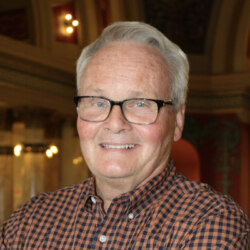The Wright Brothers and the Plane That Landed Itself
"The rest is history, as well as a phenomenal tribute to private enterprise, the profit motive, and the ingenuity of free and unsubsidized entrepreneurs."
One hundred and twenty years ago this month—at Kitty Hawk, North Carolina in December 1903—two bicycle mechanics from Ohio named Orville and Wilbur Wright staged the world’s first manned flight. It gave birth to a worldwide business that is projected to transport more than 32 million people by air in 2023.
Every one of those passengers will fly in a plane operated by at least one human pilot. I wonder what Orville and Wilbur would think about the time when a plane landed in Montana without one. That’s right—on February 2, 1970, an F-106 arrived on a snowy field near Big Sandy in Chouteau County with no one aboard.
Stephan Wilkinson recounted the story at History.net in 2021. The supersonic fighter’s pilot, Gary Foust, had taken off from Malmstrom Air Force Base and reached 38,000 feet when the plane began a nosedive. Foust lost control and ejected at 15,000 feet, assuming his craft would continue its vertical descent and quickly crash. Witnessing the event, a fellow Air Force pilot in another F-106 nearby radioed facetiously, “Gary, you’d better get back in it.”
The plane righted itself after Foust’s ejection and, in a miracle Orville and Wilbur could never have imagined, eventually landed, intact, where it sat until a local sheriff showed up. He crawled into the cockpit and attempted to switch the engine off but the F-106 had a mind of its own. It started sliding across the field, at which point the sheriff bailed and waited until the plane ran out of gas about 400 feet away. Today, the “Cornfield Bomber” resides at the Air Force Museum near Dayton, Ohio.
In 1878 a simple gift from a father to his two sons—aged 7 and 11—planted the seed that would change history forever. It was a toy helicopter made of cork, bamboo, and paper, and powered by a rubber band. Wilbur and Orville Wright were mesmerized. They built their own copies and versions of it, fostering a lifelong fascination with flight. Twenty-one years later, in 1899, they took time out from their modest bicycle shop to begin the work that would lead to the world’s first successful airplane.
Samuel Langley, meantime, was already way ahead of the Wrights. Born in 1834, he earned an international reputation for his work in physics and astronomy and by publishing a book on aerodynamics. He was secretary of the respected Smithsonian Institution in Washington, D.C. He was sure he would be the man to invent the airplane, and probably deemed it unthinkable that young whippersnappers from small-town America could come out of nowhere with little money and beat him to it.
Both Langley and the Wright brothers had Smithsonian connections but with a huge and perhaps decisive difference. For Langley the Smithsonian was the conduit for a $50,000 federal grant, matched by the Institution, to finance his experiments (equivalent to about a million dollars in today’s purchasing power). As for the Wrights, in 1899 Wilbur wrote a letter to the Smithsonian asking for nothing more than a reading list on flight. He and Orville would finance their dream not with government money, but with the nickels and dimes they could scrape from the profits in their private business.
During the summer and fall of 1903 Langley worked feverishly at his Washington home base. Because he felt it safest to fly over water, he spent half his money building a houseboat with a catapult to launch his newest craft with a man, Charles Manly, aboard. A catapult launch meant that the plane would have to go from a dead stop to a flying speed of 60 mph in just 70 feet, a feat that would prove beyond the reach of his craft’s capabilities.
Meanwhile back in Dayton, Wilbur and Orville Wright worked on propeller design, a lightweight engine, and wings that mimicked the way pigeons flew, as the brothers observed them.
On October 7, 1903, Langley’s plane, with Manly aboard, was ready to go. At least that’s what Langley and Manly thought. But the stress of the catapult launch badly damaged the front wing, and the plane tumbled over and disappeared in 16 feet of water. A reporter present wrote that it flew “like a handful of mortar.”
A second launch set for December 8 proved even more disastrous. The rear wing and tail collapsed at launch, and the plane dove right into the icy Potomac River. This time poor Manly nearly drowned. Financially, for both Langley and American taxpayers, it was a total loss.
But just nine days after Langley’s second spectacular flight to the bottom of the Potomac, Wilbur and Orville Wright took turns flying their carefully designed plane for as long as 59 seconds over the Outer Banks of North Carolina. The craft cost them about $1,000. It cost American taxpayers nothing. Within a year, they were making flights of five miles at a time; within two years, they were flying distances of 20 to 25 miles.
The rest is history, as well as a phenomenal tribute to private enterprise, the profit motive, and the ingenuity of free and unsubsidized entrepreneurs.
*****
Lawrence W. Reed writes a monthly column for the Frontier Institute in Helena, on whose board he serves. He is president emeritus of the Foundation for Economic Education and blogs at www.lawrencewreed.com.
